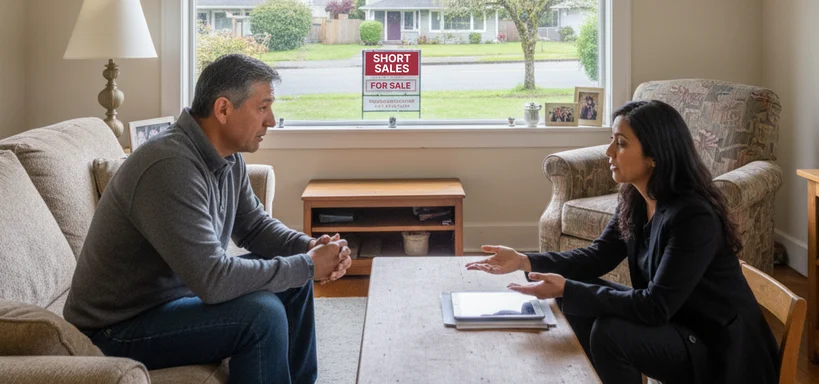Home Equity Line of Credit
A home equity line of credit is a loan that can be drawn on based on the equity in a house. The line of credit is a set amount that can be drawn from, much like a credit card. Home equity lines of credit are also referred to as open-end mortgages because they can be drawn on multiple times, whereas home equity loans are a type of closed mortgage since the loan is made in one lump sum. When you take money from the line of credit and then pay it off, meaning no money from the line of credit is being used, you will still have the loan amount available to use, much like your credit card credit limit. The loan typically has a variable interest rate and will fluctuate based on the market rates. When the loan term is up, all outstanding balances must be paid off.
Reverse Mortgage
A reverse mortgage is a loan based on the equity the borrower has in the home, where the borrower receives monthly payments from the lender rather than a lump sum. Also called reverse annuity mortgages, borrowers must be 62 or older. The mortgage is paid off when the owner passes away or sells the property. Reverse mortgages are helpful because they give access to equity in the home that may be needed for health care, or just general expenses, while providing income in a form that matches the monthly time frame of most expenses.
Blanket Mortgage
A blanket mortgage is a single mortgage that covers more than one parcel of real estate, a mortgage that is secured by several structures or numerous parcels. A blanket mortgage is often used to finance proposed subdivisions, cooperatives, or development projects.
This type of loan, a blanket mortgage, allows a developer to sell properties individually after completing a development. The blanket mortgages are typically taken out to cover the costs of purchasing and developing land that developers plan to subdivide into individual lots.
Graduated Payment Mortgage
This is a type of fixed rate mortgage in which the payment increases gradually from an initial low base level to a desired, final level. Payments increase in steps each year until the installments are sufficient to amortize the loan.
In a graduated payment mortgage, only the low initial rate is used to qualify the buyer, which allows many people who might not otherwise qualify for a mortgage to own a home. This type of mortgage payment system may be optimal for young homeowners as their income levels gradually rise to meet higher mortgage payments. Graduated payment mortgages are a form of negative amortization since the loan payments in the early part of the loan are insufficient to cover the interest charges, and therefore the loan balance increases.
Construction Loans
A construction loan is an interim loan covering construction and development costs, secured by a mortgage on the property financed. Funds are advanced at specific stages of construction, in so-called progress payments, with a portion held until completion of the project. For example, a certain percentage of a building has been leased, or other criteria have been met. Construction loans that give money to the builder at defined increments (draws) are commonly referred to as open-end mortgages, like some home equity loans. Construction financing is paid off from the proceeds of a permanent mortgage by an institutional lender, for example, a life insurance company or pension fund or bank. Open-end mortgages also allow the borrower the ability to pay off the loan at any time without penalty. Open mortgages are very similar because they also allow the borrower to pay off the loan before the end of the loan term; however, they do not allow multiple draws on the loan amount and instead it comes in a lump sum.
Some lenders have made construction loans on speculation. Many of these construction loans financing speculative real estate developments have, as a result, become long-term permanent mortgages on the books of the original lender.
Construction loans are often variable rate loans with interest rates charged based on a spread above the prime rate (index). The contractor and the lender set a schedule for the contractor to get money, based on construction progress. Loan charges are based upon the loan amount outstanding, not the total amount that will be loaned.
Option ARM
An option ARM is an adjustable rate mortgage that allows the borrower to choose the payment they want to make to the lender. The loan payment options include a minimum payment (insufficient to cover all interest), an interest-only payment, a 30-year fully amortizing payment, or a 15-year fully amortizing payment. Ideally, it gives the borrower options so they can choose the payment based on their financial ability. However, these loans caused numerous problems when housing prices dropped, since the minimum payment option is a negative amortization option.
Personal Lines of Credit
Personal lines of credit allow a borrower to access funds using a checkbook or ATM. After the credit limit is established, there are no additional fees associated with accessing the account. Often, these lines of credit bear a lower interest rate than credit cards and some banks base the monthly payments on the actual amount that you use. Personal lines of credit are unsecured debts that don't use real property to secure the debt like a home equity line of credit.
Knowing the nuances of these loans allows you to explain financing options clearly, anticipate challenges in transactions, and better support your clients’ decision-making.

